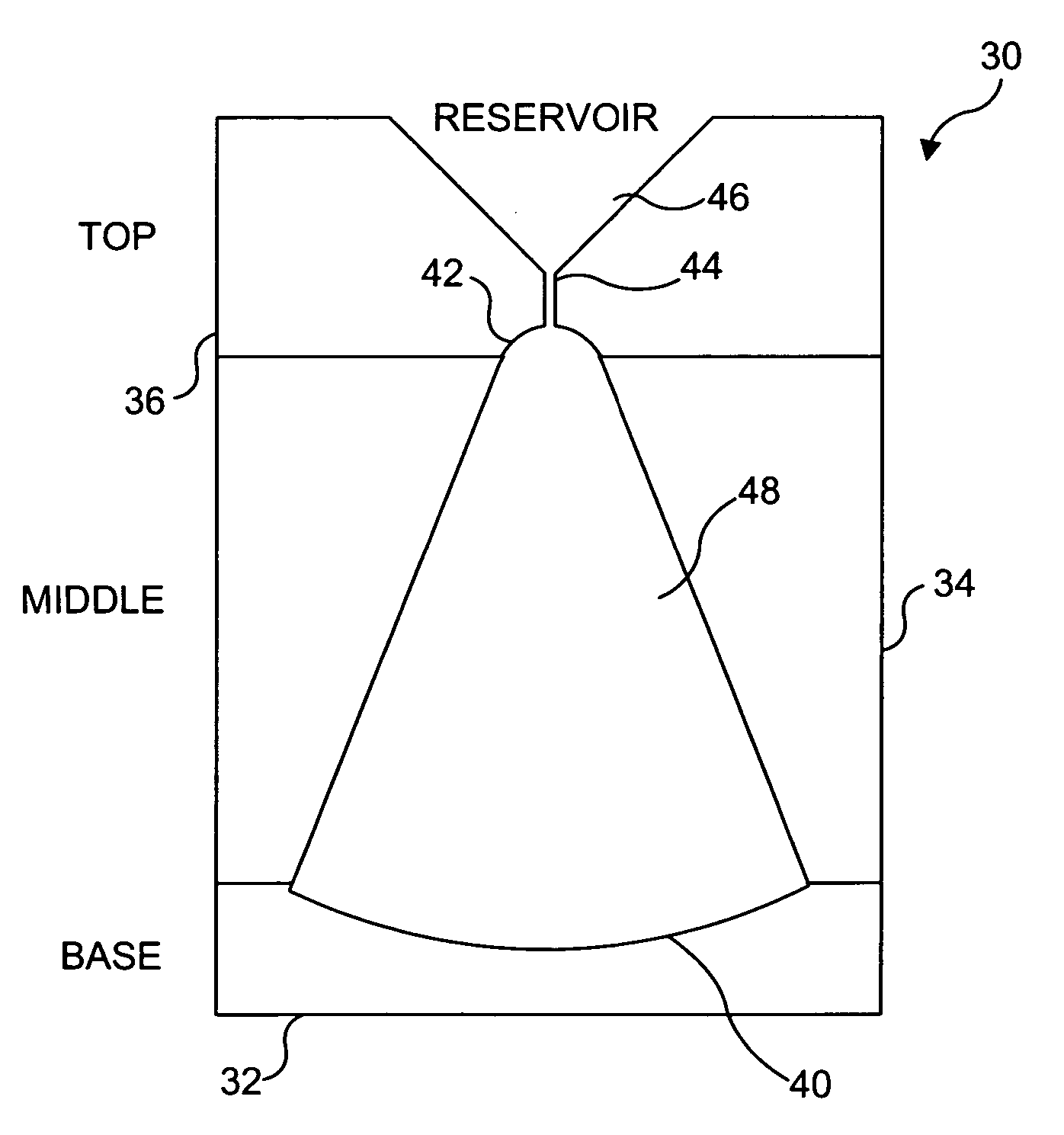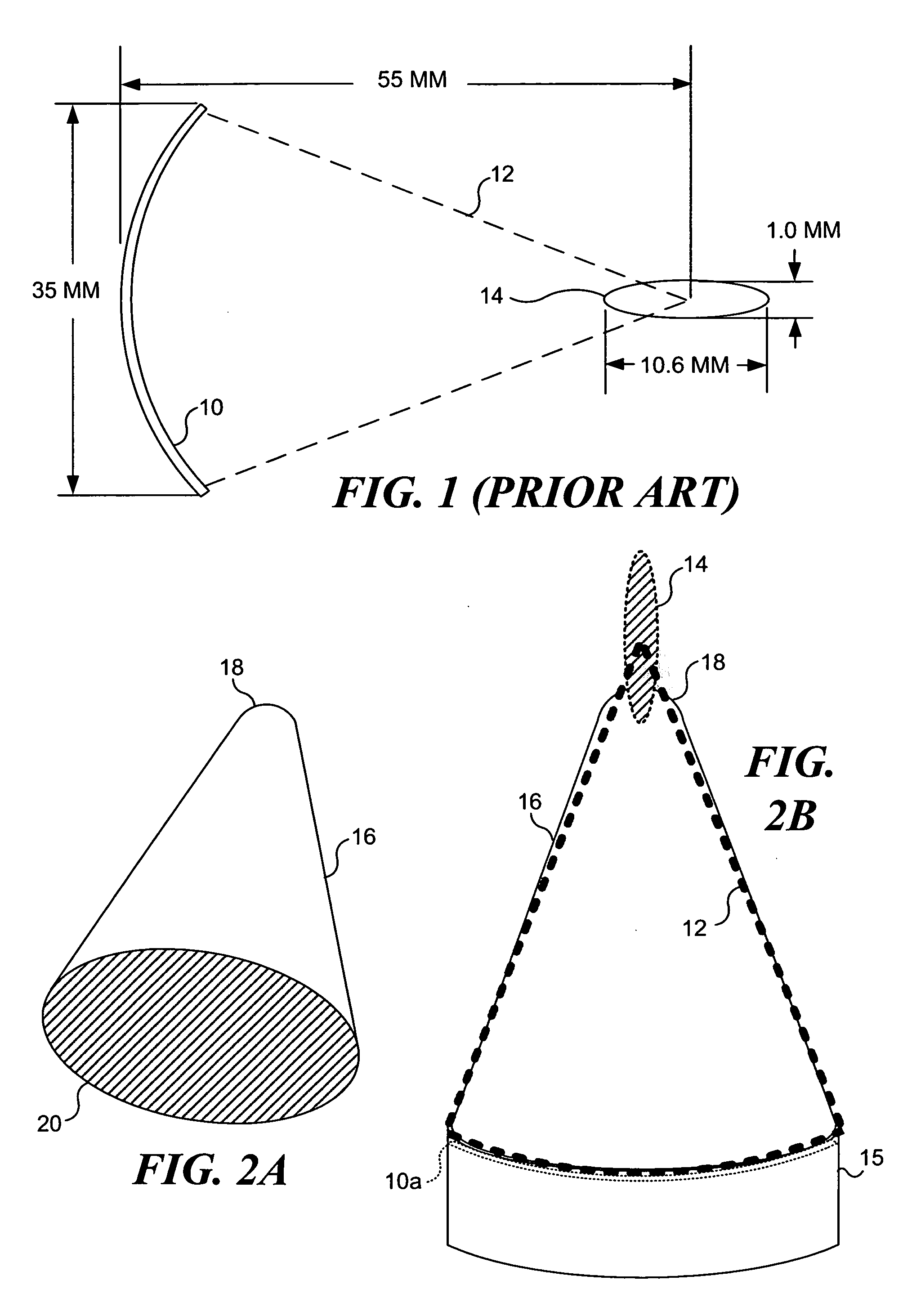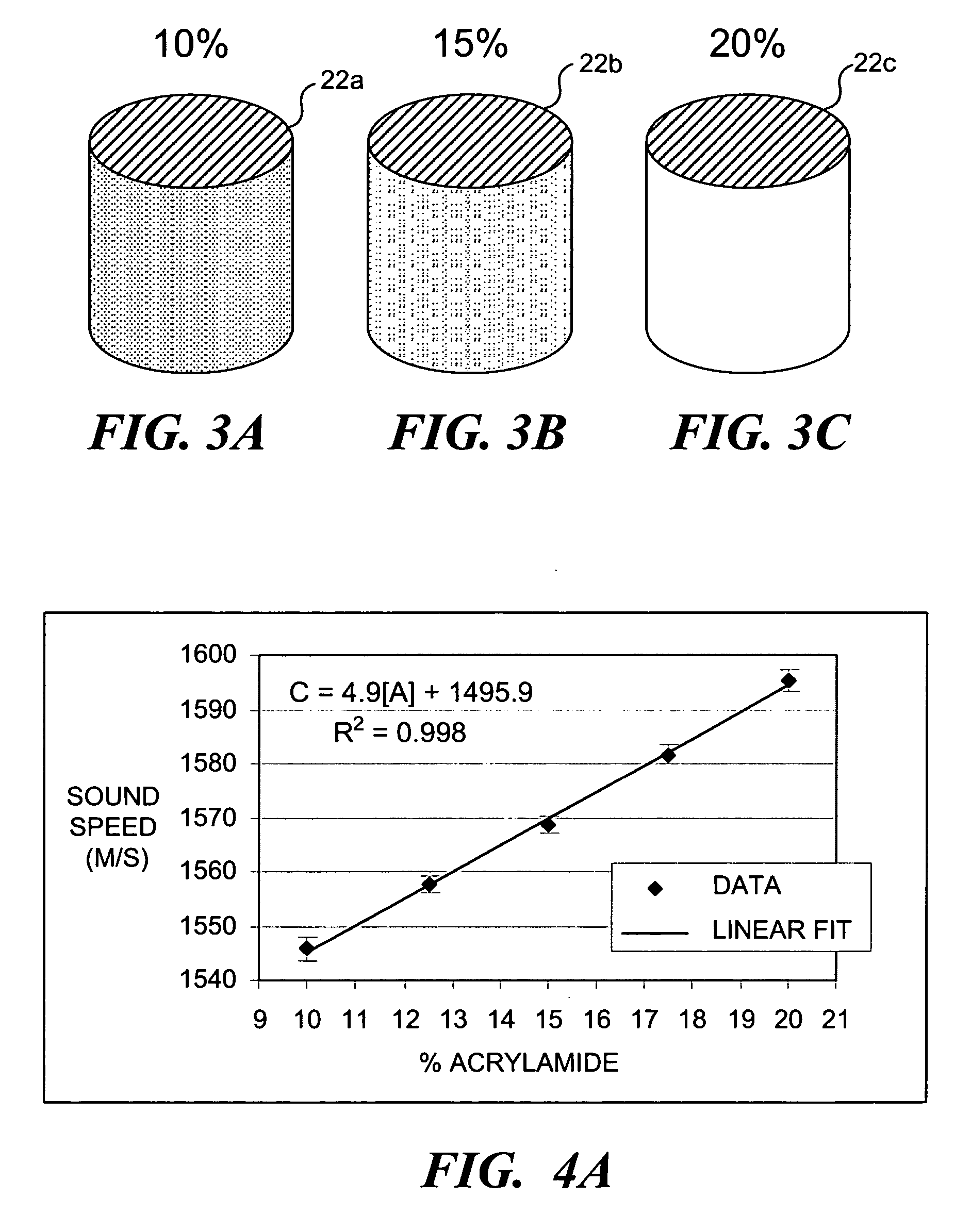Solid hydrogel coupling for ultrasound imaging and therapy
a hydrogel and ultrasound imaging technology, applied in the field of hydrogel based coupling for use in ultrasonic imaging and therapy, can solve the problems of difficult monitoring and guidance of hifu lesion formation, impractical clinical setting, sterilization, circulation, etc., and achieve the effect of reducing the volume of the mixtur
- Summary
- Abstract
- Description
- Claims
- Application Information
AI Technical Summary
Benefits of technology
Problems solved by technology
Method used
Image
Examples
Embodiment Construction
[0089] The present invention relates to utilizing solid hydrogels as acoustic couplings for clinical applications of ultrasound imaging and therapy, particularly HIFU based therapy. Various aspects of the present invention are disclosed in regard to different embodiments of hydrogel based couplings, methods for using such couplings, and methods for fabricating such couplings.
[0090] In the course of developing the present invention, hydrogel couplings in accord with the present invention were evaluated by using such hydrogel couplings to acoustically couple a known acoustic transducer to a variety of targets. As shown in FIG. 1, the specific acoustic transducer employed was a prior art HIFU transducer 10 (SU-102-01) obtained from Sonic Concepts (Woodinville, Wash.). The single element, spherically concave transducer has a center frequency of 3.5 MHz. Its aperture diameter and radius of curvature are 35 mm and 55 mm, respectively, providing an f-number of 1.57. Field mapping of the f...
PUM
 Login to View More
Login to View More Abstract
Description
Claims
Application Information
 Login to View More
Login to View More - R&D
- Intellectual Property
- Life Sciences
- Materials
- Tech Scout
- Unparalleled Data Quality
- Higher Quality Content
- 60% Fewer Hallucinations
Browse by: Latest US Patents, China's latest patents, Technical Efficacy Thesaurus, Application Domain, Technology Topic, Popular Technical Reports.
© 2025 PatSnap. All rights reserved.Legal|Privacy policy|Modern Slavery Act Transparency Statement|Sitemap|About US| Contact US: help@patsnap.com



